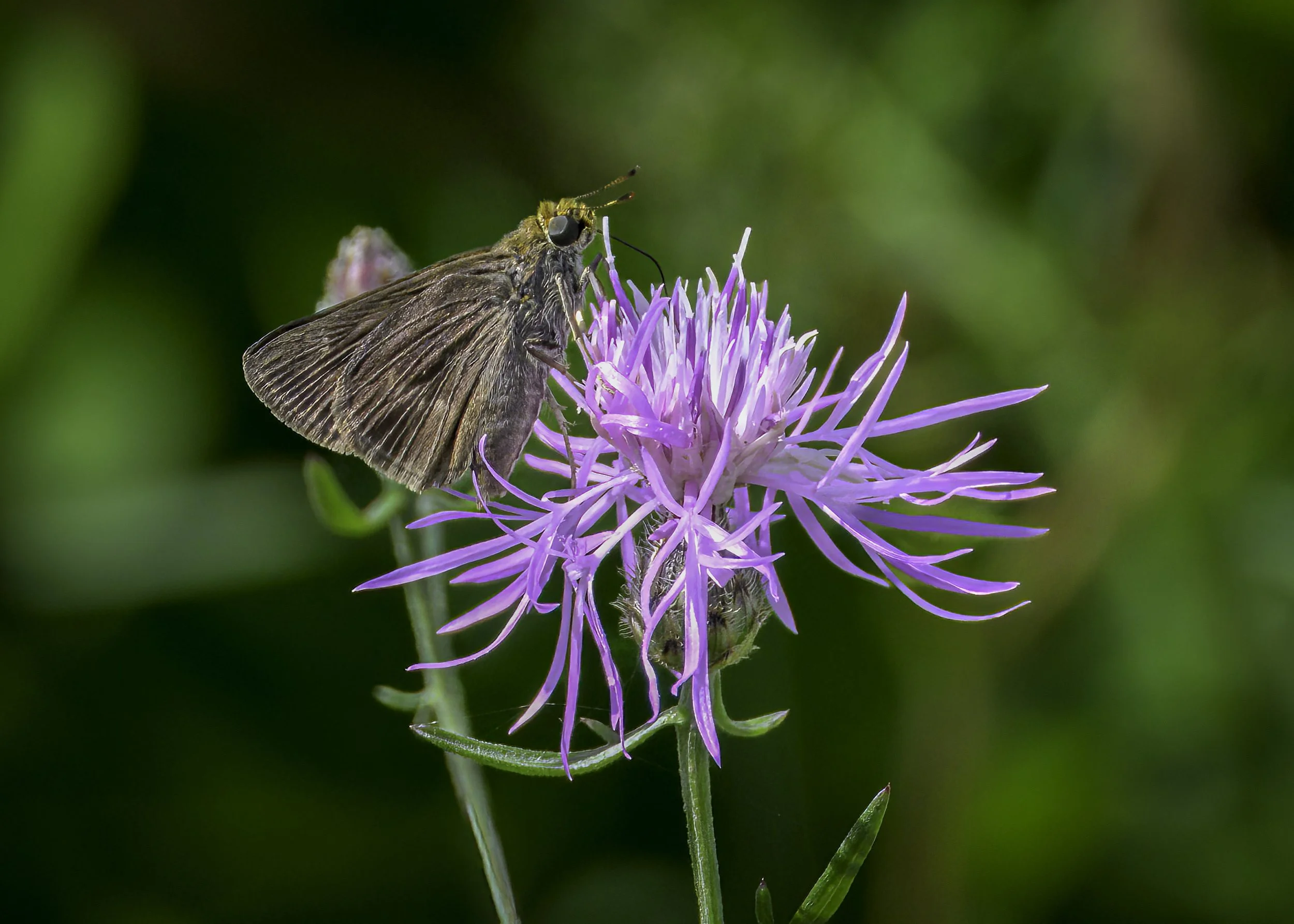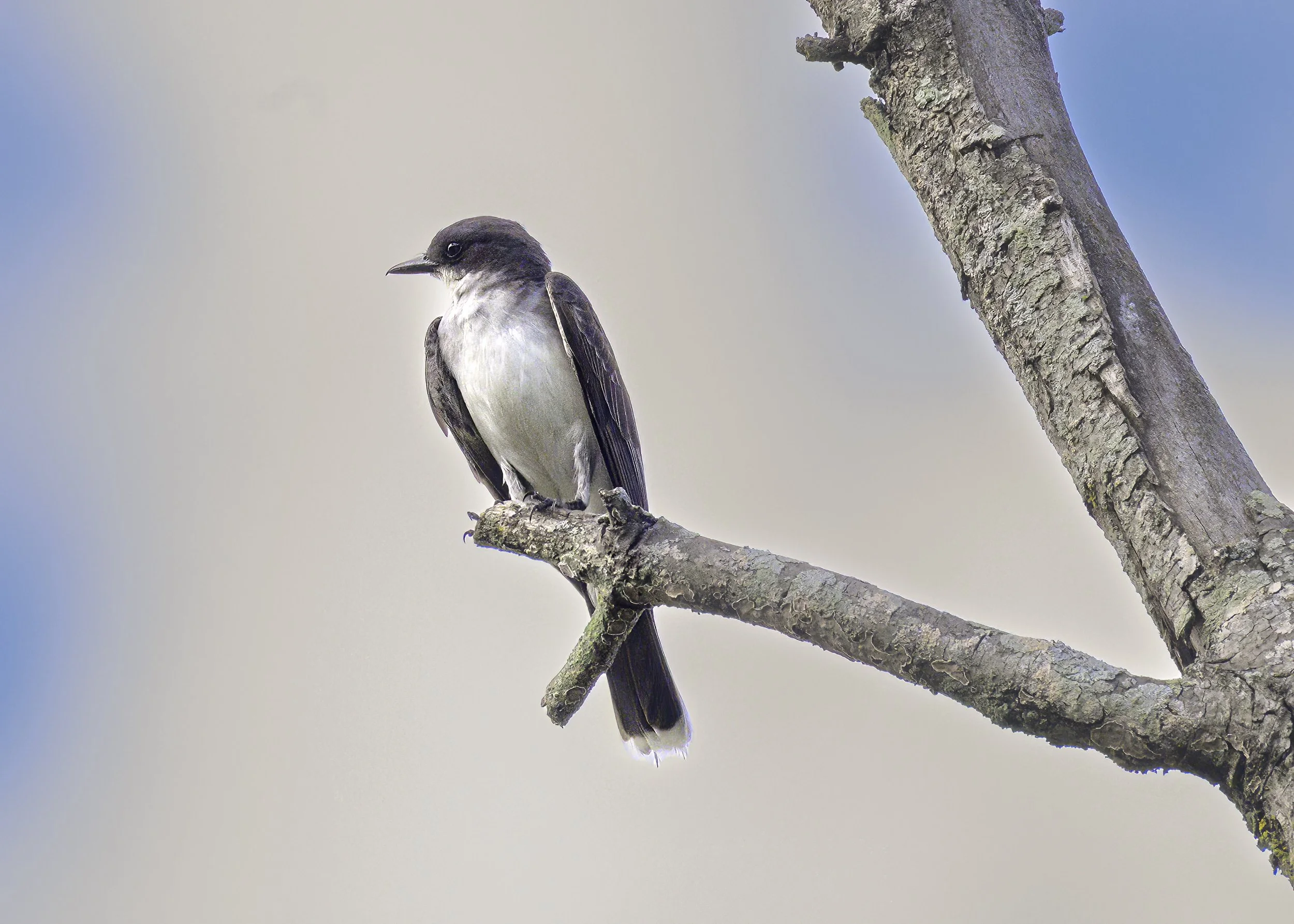Iona Island-Low Tide
Dun skipper on Spotted knapweed
Another warm humid day in the Hudson Valley. In spite of the fact that wildflowers are in bloom, butterflies seem to be scarce. Perhaps it is too early in the season, but for whatever reason, when I see a butterfly of any size, shape or color these days, I grab a photo. As I drove onto the causeway leading out to Iona, I spotted some knapweed flowers and decided to check for butterly activity. This little guy is the Dun skipper. The Dun Skipper is a small butterfly commonly found in North America, particularly in grassy and open woodland habitats. Known for its distinctive muted brown coloration with subtle orange and cream markings, the Dun Skipper thrives in areas where native grasses grow, as these serve as host plants for its larvae. Adults exhibit a rapid, skipping flight pattern, which aids in evading predators and navigating through dense vegetation. They are valuable pollinators as seen with this individual helping to propagate this pretty Knapweed.
Further along the causeway, I ran into a Great blue heron which I have to believe is the same juvenile that has been foraging in the marsh for several weeks now. He quickly took flight as I approached giving me only a brief shot of him against the backdrop of the Bear Mountain Bridge.
Being low tide, I was hoping for some shore bird activity to be working along the mud flats. I did finally see a Killdeer which was quite animated just a short distance out on the flats. I then realized why he was so active. A juvenile Red-winged blackbird was quite nearby and apparently had gotten too close to what the killdeer had assumed was “his” territory. The Killdeer continued to close in on the blackbird until there was a final face-off. As is often the case, size matters and this killdeer succeeded in driving the intruder away.
And as is usually the case, to the victor goes the spoils. The killdeer continued to work the flats, picking off any unfortunate prey such as the worm seen here in the killdeer’s bill. It’s good to be king.
The killdeer gets his reward….a nice juicy worm.
While low tide is an excellent time to be out checking for shore birds, it does have its downside. The flies in marshlands can be quite annoying in the summer heat. At least the flies I encountered today were One-striped deer flies.
Deer flies and horse flies become quite prevalent during the heat of summer and their bite can be painful. Both have razor like plates rather than “teeth” and saw little chunks of our flesh away leaving a bloody wound. Deer flies tend to be slow, however, and can usually (hopefully) be swatted away before doing too much damage. I encountered quite a few which were all located in one specific area near the water. I did manage to make it through without getting bit and did manage to capture this image showing just how handsomely marked they are. I guess beauty is in the eye of the beholder.
There were quite a few birds on the wing on the island today more than likely trying to dine upon the abundance of flies available. Among the birds seen today were those mentioned earlier as well as Northern cardinal, Tree swallows, Barn swallows, Common grackle, Eastern bluebird, European starling, Eastern phoebe, and the Eastern kingbird seen above. All in all, a nice outing even with the flies.
Tech Tip - If you wish to capture close up images such as the one above of the deer fly, you can do so with your iPhone and an App called “Macro Mode”. For $3.99, you can capture amazing closeups of flowers, insects, or whatever else strikes your fancy. Check it out on the Apple App Store and read more about it. Highly recommended.





